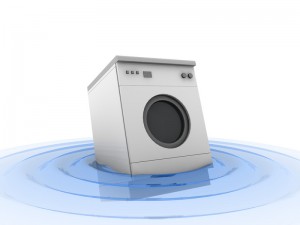A recall of approximately 21,000 LG Electronics and Kenmore Elite Gas Dryers has been issued by the US Consumer Product Safety Commission, LG Electronics, Inc. and Sears. The gas dryer recall concerns a faulty gas valve that can fail to properly shut off once a drying cycle has ended. Such defective dryers continue to experience building heat, both internally and externally— leading to scorched drums, burning of the dryer and its contents and smoke inhalation dangers.
LG and Sears have collectively received over 141 complaints from consumers testifying that clothes dryers have continued to heat post the dryer cycle. Three consumers were burned by the defective gas dryers. Logs show 50 incidents of burnt or scorched clothing.
The recalled clothes gas dryers were manufactured in South Korea. The impacted LG Electronics gas dryers were sold by a variety of appliance stores, including Sears, across the US from November 2009 through August 2010. The recalled Kenmore Elite gas dryers where sold exclusively at Sears stores in the US from November 2009 through August 2010. The gas dryers had a retail price range retailed from approximately $650 – $1,500 depending on the model.
Consumers can determine if their gas clothes dryer is impacted by model number. A listing of model numbers can be found at the following CPSC website, click here.
Should consumers confirm or suspect that their gas dryer is impacted by this recall, they are advised by the CPSC to IMMEDIATELY turn off the gas supply to the clothes dryer and discontinue further use of the dryer.
Consumers who purchased a recalled LG Electronics or Kenmore Elite dryer from Sears, should contact Sears for a free repair. The remedy is a replacement of the defective gas valve. For consumers who purchased their units from other retailers should contact LG customer service directly for the replacement part.
Here is the customer service contact information:
LG Consumer Contact: For additional information about the recall and to schedule a repair, contact LG toll free at (866) 223-5355 between 8 a.m. and 7 p.m. CT Monday through Friday, and between 8 a.m. and 2 p.m. CT on Saturday, or visit the firm’s website at www.lg.com/us and click on Public Notices.
Sears Consumer Contact: For additional information and to schedule a repair, contact Sears toll-free at (888) 375-9741 between 7 a.m. and 9 p.m. CT Monday through Friday, and between 7:00 A.M. and 6:00 P.M. Saturday, or visit the firm’s website at www.sears.com and click on Product Recalls under Customer Service.
Additional information relating to impacted model numbers and how to locate a model number can be found on the CPSC website, click here.









